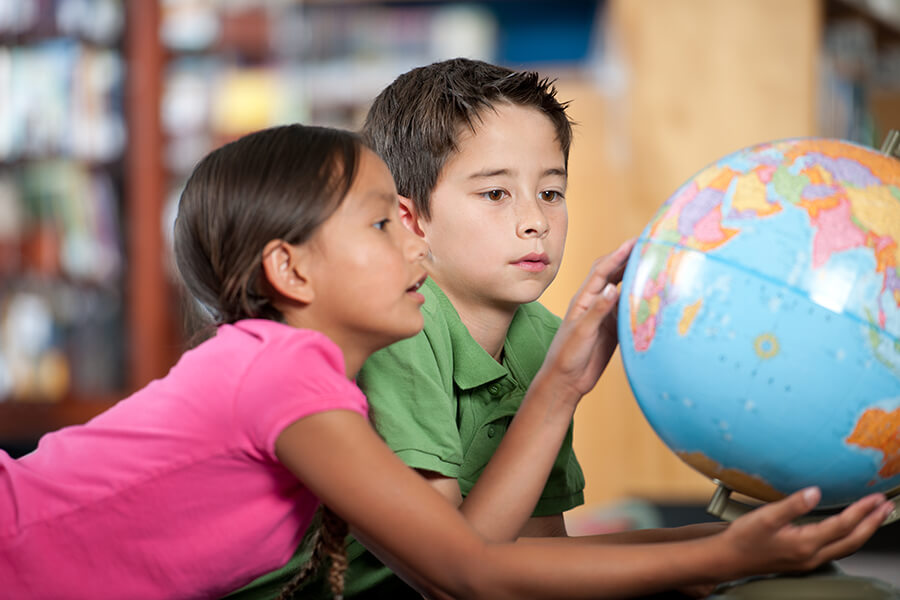
In an increasingly interconnected world, the ability to communicate across cultural and linguistic boundaries has become more valuable than ever. The practical gains of bilingualism are clear: children can communicate with people who speak the same language, learn about different cultures, and later find wider career opportunities. But beyond those advantages, there are other cognitive, social, and cultural benefits that enrich a child’s development. Here are some reasons why learning a second language is beneficial for kids.
Cognitive Development
The process of learning a second language stimulates cognitive development in children, fostering greater problem-solving skills, creativity, and critical thinking abilities. Studies have shown that bilingual children often show better cognitive flexibility as they learn to navigate between two linguistic systems and switch between them seamlessly. This mental flexibility not only improves their linguistic proficiency but also extends to other academic and intellectual areas.
A study published in “Developmental Science” compared bilingual and monolingual children, revealing that bilingualism positively influences tasks requiring attention, inhibition, and short-term memory, indicating a significant impact on executive function development. These cognitive advantages facilitate language learning and equip children with valuable cognitive skills that serve them well across various domains of learning and decision-making throughout their lives.
Cultural Awareness and Empathy
Learning a second language also opens the door to new cultures, traditions, and perspectives, fostering cultural awareness and empathy in children. By exploring different languages and the cultures associated, children develop a broader understanding of the world and learn to appreciate diversity and multiculturalism. Through exposure to literature, music, films, and other cultural experiences in a second language, children gain insight into another perspective and cultivate empathy for people from diverse backgrounds.
Furthermore, language learning provides a platform for meaningful intercultural exchanges and connections, allowing children to forge friendships and bridge cultural divides with peers from around the globe. These cross-cultural interactions promote tolerance, respect, and open-mindedness, nurturing a generation of global citizens who are equipped to navigate the complexities of our interconnected world with empathy and understanding.
Enhanced Communication Skills
Mastering a second language equips children with enhanced communication skills, helping them to express themselves effectively and connect with others across linguistic boundaries. As they learn to navigate the nuances of language, children develop a deeper appreciation for the power of words and the art of effective communication. Whether engaging in conversations, storytelling, or creative expression, bilingual children gain confidence in their ability to convey their thoughts, emotions, and ideas in different ways and words.
Moreover, bilingualism has been shown to improve overall language proficiency, including skills in their native language. As children develop a strong foundation in a second language, they become more attuned to the structure, grammar, and vocabulary of both languages, enhancing their language abilities across the board. This linguistic dexterity not only facilitates academic success but also opens doors to future experiences and careers where bilingualism is either mandatory or encouraged.
Academic Benefits
Research from the University of California, Los Angeles (UCLA) emphasizes the association between bilingualism and academic excellence. Bilingual children often outperform their monolingual peers in standardized tests. The study underscores that the benefits extend beyond language skills, positively impacting performance in subjects like mathematics and reading.
The American Psychological Association (APA) also points out the positive influence of bilingualism on cognitive flexibility. Bilingual children develop the ability to switch between tasks seamlessly, adapt to new learning environments, and approach challenges with resilience. This cognitive flexibility allows them to adapt quickly to new learning experiences, essential for success in today’s rapidly changing world.
Long-Term Benefits
Learning a second language lays the groundwork for lifelong language learning and personal growth that follows children into adulthood. Bilingual adults are better equipped to adapt to new environments, navigate international careers, and engage with diverse communities on a deeper level. It can be particularly beneficial in fields where multilingualism is valued, such as international business, diplomacy, and translation. It also provides people with more travel opportunities and experiences that monolingual travelers may not know.
Bilingualism has also been linked to a reduced risk of age-related cognitive decline and brain diseases. A comprehensive study published in the “Journal of Cognitive Enhancement” suggests that individuals experience a delayed onset of Alzheimer’s disease, showcasing the enduring advantages of learning a second language from a young age. The cognitive reserve built through lifelong bilingualism is thought to contribute to this protective effect, enabling individuals to maintain cognitive function even in the face of neurological challenges.
Conclusion
The benefits of learning a second language for children are many, encompassing cognitive, social, and cultural dimensions of development. By embracing language learning as a gateway to new experiences, perspectives, and opportunities, parents and educators can nurture the next generation of global citizens who are equipped to communicate, collaborate, and contribute to a more inclusive and interconnected world.

Emily currently lives in Orange County, California after spending four years in Illinois and half a year teaching in Florence, Italy. She holds a B.A. in English Literature from Knox College and an M.A. in Counseling from the University of San Diego and has taught English to native speakers and ESL students for over three years. When she’s not working as a School Counselor or writing, she enjoys traveling the world, playing instruments, and blogging about Millennial experiences at Long Live the Twenties.
